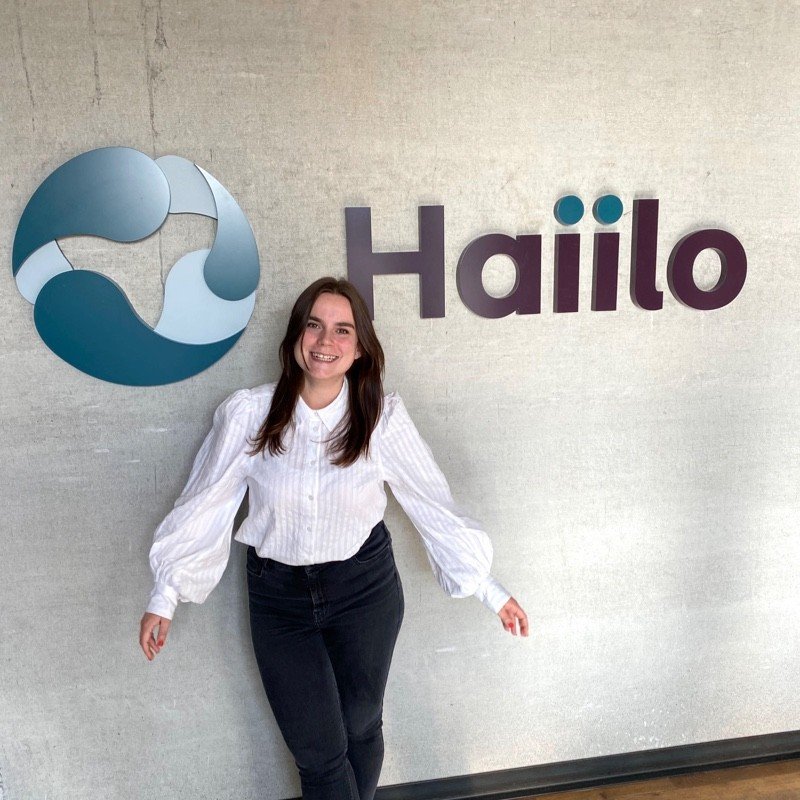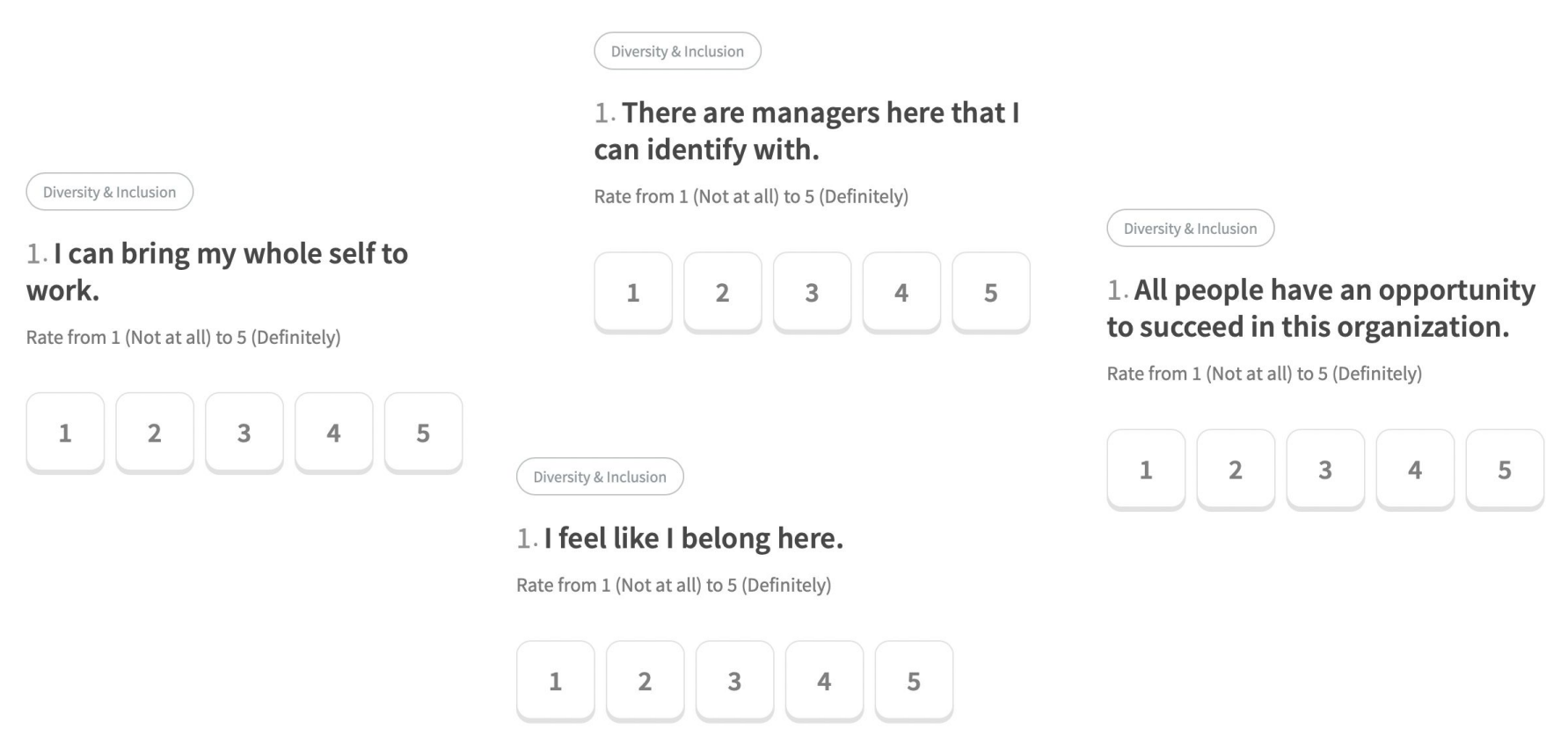By Janus Boye
Back in April, Lisa Borchert started her part-time role as Diversity & Inclusion Officer at software firm Haiilo based in Hamburg, Germany.
Her goal is to make sure that Haiilo is a diverse and inclusive place to work with equal rights and opportunities for all. A place with 300+ colleagues spread out over 5 locations in Europe and North America, where everyone feels safe and enjoys the work they do. No matter their gender, sexual orientation, nationality, ethnicity, beliefs or background.
In a recent member call, Lisa Borchert shared her story and her progress during the initial 6 months. Like most stories, this one started at the beginning.
How Lisa started her diversity & inclusion role in 4 steps
Back in the beginning of the year, management at Haiilo implemented a big change: They created the Haiilo brand based on three merged companies: COYO from Germany, Smarp from Finland and Jubiwee from France.
Being bigger and more international, management noticed that some employees were not satisfied with not having a dedicated diversity strategy. They quickly decided to carve out some space for an initial part-time role and promote someone internally to become the diversity & inclusion officer.
Lisa has been working as a product marketing manager since 2020 and decided to go for the additional role, which she officially took on in April.
In the call, shen then took us through her initial 4 steps in the role:
Step #1: Lisa aligned with management and presented the role and herself to the whole company. This included the framework for her work, and reminding colleagues that she still had her role as product marketing manager. Lisa also covered definitions to make the scope and remit clear. In addition she also shared her motivation for taking the role and outlined her initial planned next steps and goals for the year.
Step #2: Keep the conversation going. It’s important to talk both internally and externally about the topic of diversity & inclusion to get new ideas and to learn from others and involve colleagues who want to drive D&I topics forward.
Step #3: In June, she did a company-wide internal survey to better understand and prioritize. Below you can see some of the 20 questions that were included.
Some of the questions that Lisa used in the beginning of her new role working on diversity & inclusion at Haiilo
The survey results were really insightful and Lisa very much recommends doing this, also as it helps making colleagues feel involved.
Step #4: Small actions with big impact, which is all about quick wins that make a real difference.
Let’s dive into those actions.
Diversity & inclusion actions that matters
Among the first ones that Lisa did was to create an internal diversity & inclusion community, where colleagues can simply discuss the topic and share their views. Lisa also started writing internal blog posts to help raise both awareness and the understanding.
Lisa also added pronouns to the internal communication tools, including Zoom and Slack. As Lisa said, it’s a tiny but easy step towards becoming more inclusive and towards her colleagues she provided guidance on why pronouns makes a difference.
Another example which Lisa shared, was from the Hamburg office, where in addition to restrooms for females and males, they now have restrooms for everyone. They did that because they want everyone to feel welcomed and safe.
Lisa’s colleague in the design team also provided header images which people can use on their social profiles, like promoting pride month at Haiilo on their LinkedIn page. More than expected adopted those, which helped create further awareness and engagement.
Finally, back in August, Haiilo signed the German diversity charter to publicly commit to the goal of making Haiilo a truly diverse workplace. Known in German, as the ‘Charta der Vielfalt’ this is a corporate initiative to promote diversity in companies. The non-profit dates back to 2006, and today over 4,800 companies and organisations with a total of more than 14,9 million employees have signed.
Before moving on with the member call, we heard a few other examples of D&I actions from participants:
Pride Month with an internal fashion line, so that employees can buy and wear t-shirts that promote D&I
Diversity & inclusion trainings, in particular focused on unconscious bias
Writing job ads to make everyone feel more included
Diversity targets with the advice to dare to be ambitious
Specifically at Telia they have 5 publicly communicated diversity targets. One of the goals is 50/50 gender balance in all markets at all levels by 2025. For more details on their work at Telia, see our past case study on diversity & inclusion at Telia
Mentors to make new employees feel safe and able to ask and report
Role models, specifically looking at KPIs in terms of finding the right role models with the right behaviours, not just role models based on gender
Diversity & inclusion recommendations and lessons learned
Reflecting on what she has learned, Lisa shared 5 recommendations for anyone considering going into a new D&I role:
Let people apply for the role - a D&I officer needs a strong why, as you have speak up for people and stay persistent – also in front of higher management, which can be tough.
Don’t start without a (real) budget. This is what Lisa did, but building an inclusive workplace can get expensive. Besides training, keynotes, and other initiatives, you might need more than one person to become a truly diverse organisation.
Make sure management trusts your decisions, and that they have your back if needed, as mistakes are likely to happen at some point. You might also need to remind your colleagues that your intentions are good and that you are doing your best.
Do not overthink. Diversity is complex but no rocket science. Plenty of things you can change quickly. You don’t need a killer strategy to succeed in this role. Just get started with what you have and grow from there.
Don’t expect things to be changed by tomorrow. It can take some time for the first effects to show and things will not change overnight. Try to focus on awareness and education. Anyone in this role, will be challenging people’s beliefs, which takes time to get used to. Also: Accept that you’ll never reach everyone with your messages.
Anything else? What’s important for setting up the D&I role? Among the participants we heard:
Be honest when you take on a role. As in, understand your own strengths and weaknesses. Are you the one doing the reporting, data analytics or do you need help for these tasks?
Budget is key - ask for more. It’s an important priority and budget should reflect this, so that you have the resources to be successful
Make sure to get the mandate and that management is willing to act. Don’t take on this role, if it’s not really a priority - then you will just be in endless fights
Chris Hovde who works with Leadership & Culture at Telia stepped in with a memorable quote:
“Everyone says it’s really difficult. Everyone says it takes time. Everyone will say they find diversity & inclusion important. That’s all corporate bullshit. Many companies have proven that it’s indeed possible to deliver on this in 6 months. We need to step up the game, be more honest and prove it with actions and not just words.
Following on from this, we heard from a UK community member, which previously had the role in an organisation faced by budget cuts. Unfortunately D&I wasn’t seen as business critical, so some of the resources were made redundant. Stories like these are out there.
What you can do to drive diversity & inclusion in your organisation?
Lisa also shared a few small ideas to move things forward:
Ask your D&I people how to support them. They always need a helping hand
Don’t underestimate your power. Often we think that many small things we do or say don’t have a big impact. It’s exactly the opposite. We are all role models
Add your pronouns to your profiles, even if its not relevant for you personally, it might help someone else if more people do it
Educate yourself. It’s not just the D&I officer which should be knowledgeable about this topic. We all have much to learn on this topic
Speak up if you see something wrong. In the end it matters, in particular what happens behind closed doors. It can be quite difficult, but as Lisa said: There’s no progress without friction.
We did run out of time, but Lisa did have a bonus slide in her deck on what comes next
Diversity & inclusion at Haiilo: What comes next?
These are the planned actions for the rest of the year:
Unconscious bias training
D&I ambassadors
Implement D&I in company onboarding
Gender-neutral language
Interview series “how to be an ally”
Learn more about diversity & inclusion
Among the participants in the call were Chris Hovde who works with diversity & inclusion at Telia. He was our expert of the month in August.
The conversation continues in our future workplace community, which meets regularly around Europe and North America. The Hamburg chapter had the pleasure of Lisa as a guest speaker back in August.
Finally, you can also view the slides (PDF) or lean back and enjoy the entire recording below.


